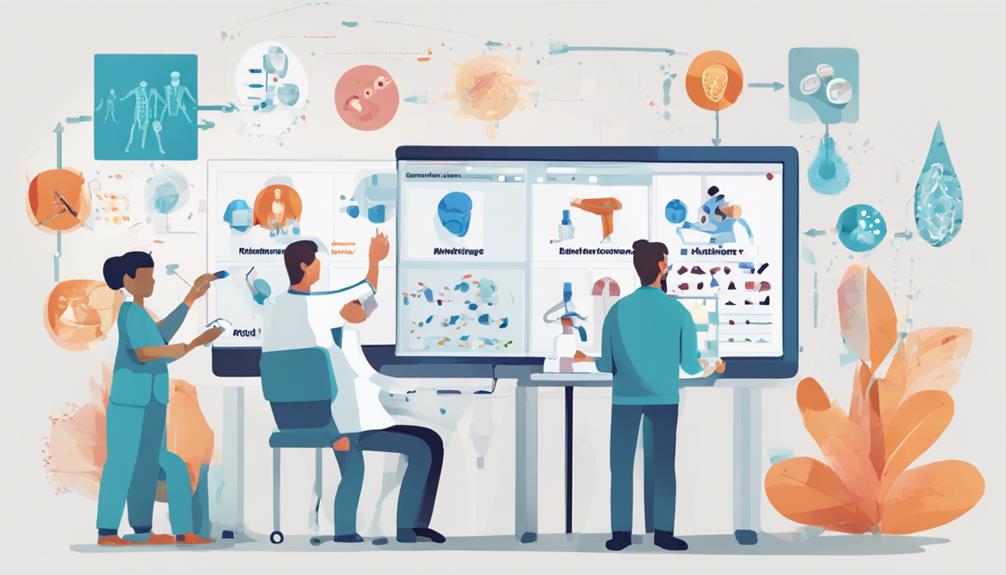Clinical Trials: Study Design, Endpoints and Biomarkers, Drug Safety by Tom Brody – Summary and Review

The book "Clinical Trials: Study Design, Endpoints and Biomarkers, Drug Safety" by Tom Brody provides a comprehensive overview of the intricacies involved in designing clinical trials. It delves into the importance of selecting appropriate endpoints to measure the effectiveness of drugs and the significance of biomarkers in predicting patient responses. Additionally, the book emphasizes the critical role of drug safety in the clinical trial process, underscoring the need for rigorous monitoring and evaluation to ensure patient well-being and the reliability of study results. Overall, Brody's work serves as a valuable resource for researchers, clinicians, and regulators involved in the development and assessment of new pharmaceuticals.
This book is a must-read for anyone seeking a deeper understanding of the challenges and considerations inherent in clinical trial design and execution. Brody's insights shed light on the complexities of this crucial stage in drug development, offering valuable guidance on navigating the complexities of study design, defining appropriate endpoints, and leveraging biomarkers effectively. By emphasizing the importance of drug safety throughout the clinical trial process, Brody underscores the ethical imperative of prioritizing patient well-being and safety above all else. Through a combination of theoretical analysis and practical examples, this book equips readers with the knowledge and tools needed to conduct successful, ethical, and impactful clinical trials.
Key Takeaways
- Thoughtful study design crucial for successful clinical trials and healthcare progress.
- Selecting meaningful endpoints aligned with study goals enhances credibility and impact.
- Essential monitoring of drug dosage and side effects for accurate evaluation and patient safety.
- Compliance with regulatory standards ensures data reliability, validity, and patient protection.
Importance of Study Design
The foundation of any successful clinical trial rests upon the meticulous crafting of its study design. The importance of study design can't be overstated, as it serves as the blueprint for the entire research endeavor. A well-designed study is like a well-built ship, steering the vast sea of scientific inquiry with precision and purpose.
Study design encompasses the methods and techniques used to gather data, analyze results, and draw meaningful conclusions. It's the framework that guarantees the integrity and validity of the research findings. Without a sound design, even the most promising study can falter, leading to unreliable results and wasted resources.
Researchers must carefully consider every aspect of the study design, from the selection of participants to the choice of interventions and measurements. By employing rigorous methods and adhering to best practices, they can enhance the credibility and impact of their research. In the domain of clinical trials, where lives and well-being hang in the balance, a thoughtfully crafted study design isn't just desirable—it is essential for progress and freedom in the field of healthcare.
Selection of Endpoints
In the intricate world of clinical trials, the selection of endpoints stands as a pivotal decision. Key endpoint criteria and endpoint measurement methods serve as guiding stars for researchers exploring the complex landscape of trial design.
Understanding these elements with clarity and foresight can pave the way for impactful and robust clinical investigations.
Key Endpoint Criteria
Selecting endpoints in clinical trials requires careful consideration of the desired outcomes and their relevance to the study objectives. Endpoint validation guarantees the measurement aligns with the intended study goals, while statistical power determines the sample size needed to detect a true effect.
Understanding the patient population helps in selecting endpoints that are meaningful and reflective of their experience. Additionally, considering the study duration is vital as it impacts the feasibility and reliability of the chosen endpoints.
Endpoint Measurement Methods
Careful consideration of the desired outcomes and their relevance to study objectives guides the strategic selection of endpoints in clinical trials. Measurement techniques play a vital role in ensuring the accuracy and reliability of endpoint data. Researchers must account for data variability by employing robust measurement methods that minimize errors and bias.
The choice of endpoint measurement methods directly impacts the interpretation of results and the validity of conclusions drawn from the study. Understanding the clinical implications of endpoint measurements is essential for evaluating patient outcomes accurately. By selecting appropriate measurement techniques, researchers can enhance the quality of data collected, leading to a more thorough understanding of the effectiveness and safety of the intervention being studied.
Ultimately, the meticulous selection of endpoints and measurement methods is paramount in conducting successful clinical trials.
Role of Biomarkers
Wisely employing biomarkers can greatly enhance the precision and effectiveness of clinical trials. Biomarker validation is essential in ensuring the reliability and relevance of these indicators in measuring treatment responses and disease progression. In clinical applications, biomarkers serve as valuable tools for stratifying patient populations, monitoring treatment efficacy, and predicting outcomes. Through meticulous validation processes, researchers can confidently incorporate biomarkers into trial designs, offering insights that can revolutionize the field of medicine.
Key Roles of Biomarkers:
- Patient Stratification: Biomarkers aid in categorizing patients based on their unique characteristics, allowing for tailored treatment approaches.
- Treatment Monitoring: Biomarkers enable real-time tracking of therapeutic responses, facilitating adjustments to enhance patient outcomes.
- Outcome Prediction: By analyzing biomarker data, researchers can forecast patient responses to treatments, aiding in personalized medicine strategies.
Incorporating validated biomarkers into clinical trials empowers researchers to make informed decisions, ultimately leading to improved patient care and enhanced trial success rates.
Evaluating Drug Efficacy
In understanding the impact of a drug within clinical trials, evaluating its efficacy stands as a pivotal measure of success and progress in advancing medical treatments. The efficacy of a drug is intricately tied to various factors, with drug dosage and treatment duration playing important roles in determining its effectiveness. Finding the best balance between drug dosage, ensuring it's potent enough to elicit a therapeutic response but avoiding unnecessary side effects, is key to maximizing efficacy. Furthermore, the treatment duration must be carefully considered to allow the drug sufficient time to exert its effects while also being mindful of patient adherence and overall well-being.
Evaluating drug efficacy involves monitoring not only the intended therapeutic outcomes but also potential side effects or adverse reactions that may arise. Through systematic evaluation and analysis, researchers can accurately gauge the impact of a drug on patients' health and well-being. By meticulously examining drug dosage and treatment duration, clinicians can refine treatment protocols, enhance patient care, and ultimately contribute to the advancement of medical science.
Ensuring Patient Safety
Prudent consideration of patient safety remains paramount in the domain of clinical trials, safeguarding the well-being of participants throughout the research process. In the pursuit of guaranteeing patient safety, it's imperative to prioritize patient engagement and implement robust safety monitoring strategies.
- Patient Engagement: Actively involving patients in the trial process fosters a sense of empowerment and partnership, leading to better adherence and overall safety outcomes.
- Safety Monitoring: Continuous and vigilant monitoring of patient safety parameters is essential to promptly identify and address any adverse events or risks that may arise during the trial.
- Transparent Communication: Open and clear communication channels between researchers, healthcare providers, and participants assure that any safety concerns are promptly addressed, enhancing overall trust and collaboration within the trial.
Regulatory Compliance Standards
Patient safety in clinical trials is inherently linked to the adherence to stringent regulatory compliance standards. These standards serve as the foundation upon which ethical considerations are upheld, guaranteeing that participants are protected from harm and that the data collected is reliable and valid. Regulatory compliance in clinical trials encompasses a wide range of requirements set forth by governing bodies to confirm the integrity and quality of the research being conducted.
Ethical considerations play a pivotal role in shaping these regulatory compliance standards, emphasizing the importance of transparency, informed consent, and respect for individual autonomy. By adhering to these standards, researchers not only fulfill their moral obligation to prioritize the well-being of participants but also maintain the credibility and trustworthiness of the trial results.
Essentially, regulatory compliance standards in clinical trials aren't merely bureaucratic hurdles but essential safeguards that uphold the principles of research ethics and ensure the integrity of scientific inquiry. By upholding these standards with diligence and integrity, researchers demonstrate their commitment to advancing medical knowledge in a manner that respects the rights and dignity of all individuals involved.
Data Analysis and Interpretation
In the domain of clinical trials, the essence of data analysis and interpretation lies in uncovering the statistical significance of findings.
Researchers must skillfully navigate the complexities of interpreting study data to derive meaningful insights.
Employing sophisticated data visualization techniques can further illuminate the outcomes, bridging the gap between raw numbers and actionable conclusions.
Statistical Significance in Analysis
Statistical significance in data analysis and interpretation plays an important role in determining the validity and reliability of clinical trial results. When evaluating statistical significance, it's essential to contemplate the effect size, which indicates the magnitude of the observed relationship.
Additionally, the confidence interval provides a range within which the true value of an effect is likely to fall. Understanding these concepts is vital for drawing accurate conclusions from clinical trial data.
- Effect Size: Indicates the practical significance of the results.
- Confidence Interval: Provides a range of values where the true effect lies.
- Interpretation: Essential for drawing meaningful conclusions from the data.
Interpretation of Study Data
The thorough analysis and interpretation of study data are pivotal in extracting meaningful insights and drawing accurate conclusions from clinical trials. Data interpretation challenges and study limitations must be addressed to guarantee the reliability of findings. The impact of bias on study outcomes should be carefully considered to maintain the integrity of the results. Understanding the study implications is essential for translating research findings into clinical practice effectively. By acknowledging the inherent limitations and potential biases in data interpretation, researchers can enhance the validity and robustness of their conclusions.
| Data Interpretation Challenges | Study Limitations |
|---|---|
| Biases | Small sample size |
| Missing data | Confounding factors |
| Inconsistent data | Selection bias |
Data Visualization Techniques
Utilizing innovative data visualization techniques enhances the clarity and effectiveness of data analysis and interpretation in clinical trials.
- Graphical representation: Visualizing data through graphs, charts, and diagrams provides a quick and intuitive understanding of complex datasets.
- Data interpretation: Using visual aids can aid researchers in identifying trends, patterns, and outliers within the data.
- Enhanced communication: Visual representations facilitate the communication of findings to stakeholders, promoting transparency and informed decision-making.
Future Trends and Innovations
Anticipating the future, researchers in the field of clinical trials are exploring groundbreaking advancements and cutting-edge technologies that promise to revolutionize medical research and patient care. One key trend is the continuous integration of technology advancements into clinical trials, streamlining processes, enhancing data collection, and improving patient outcomes. Additionally, patient engagement is becoming increasingly crucial, with a focus on involving patients in study design, decision-making, and feedback mechanisms to make sure their voices are heard throughout the research process.
—
| Future Trends and Innovations | Benefits |
|---|---|
| Artificial Intelligence in data analysis | Enhanced efficiency and accuracy in interpreting complex clinical data |
| Wearable devices for real-time monitoring | Improved patient compliance and precise tracking of health metrics |
| Virtual clinical trials | Increased accessibility for patients, reduced costs, and faster recruitment |
These innovations not only hold the promise of advancing clinical research but also have the potential to empower patients, making them active participants in their healthcare journey.
Frequently Asked Questions
How Do Clinical Trials Account for Individual Patient Variability in Response to Treatment?
In personalized treatment, clinical trials embrace individual patient variability by leveraging pharmacogenomics for tailored therapy. This approach optimizes outcomes by recognizing unique responses to treatment, fostering a new era of individualized care.
What Measures Are Taken to Minimize Bias in the Selection of Study Participants?
In the quest for unbiased results, researchers meticulously screen potential participants, ensuring a diverse pool to represent various demographics accurately. By prioritizing inclusivity and fairness, they minimize selection bias, enhancing the validity of study outcomes.
How Do Researchers Determine the Appropriate Dosages for the Drug Being Tested in a Clinical Trial?
Researchers determine appropriate dosages for the drug being tested in a clinical trial by conducting pharmacokinetic analyses to understand how the body processes the drug. This data helps in determining efficacy and finding the perfect dosage for the desired therapeutic effect.
What Considerations Are Made for the Potential Long-Term Effects of the Drug on Patients Post-Trial?
When evaluating the potential long-term effects of a drug post-trial, researchers prioritize patient outcomes through meticulous long-term monitoring. This approach guarantees a thorough understanding of the drug's impact on individuals beyond the confines of the initial study.
How Are Potential Conflicts of Interest Managed Within the Clinical Trial Process to Ensure Unbiased Results?
In ensuring unbiased results, managing conflicts of interest is paramount within the clinical trial process. Transparency, independent oversight, and strict guidelines help maintain integrity, fostering trust in the outcomes. These measures promote credibility and uphold ethical standards.










